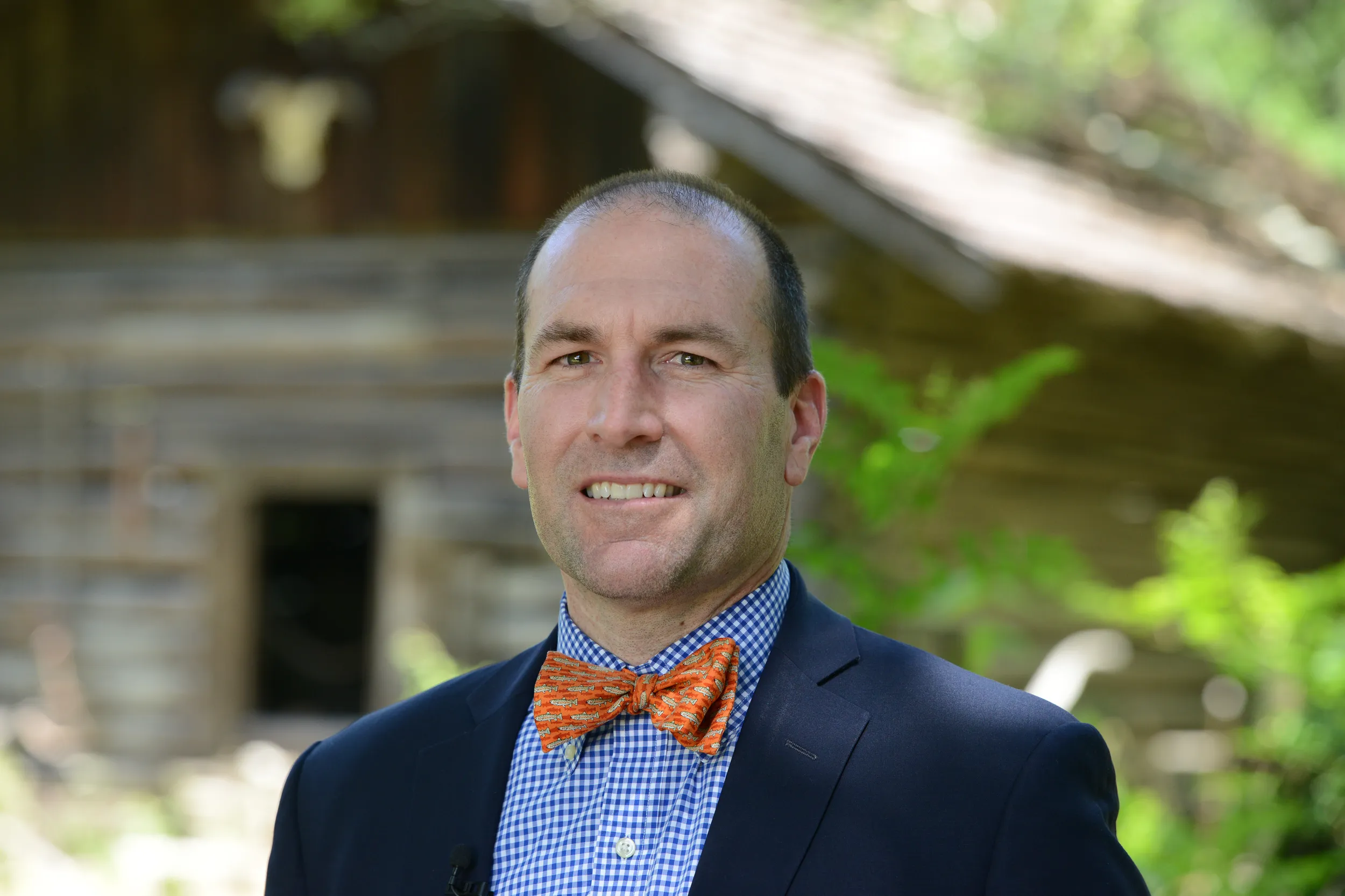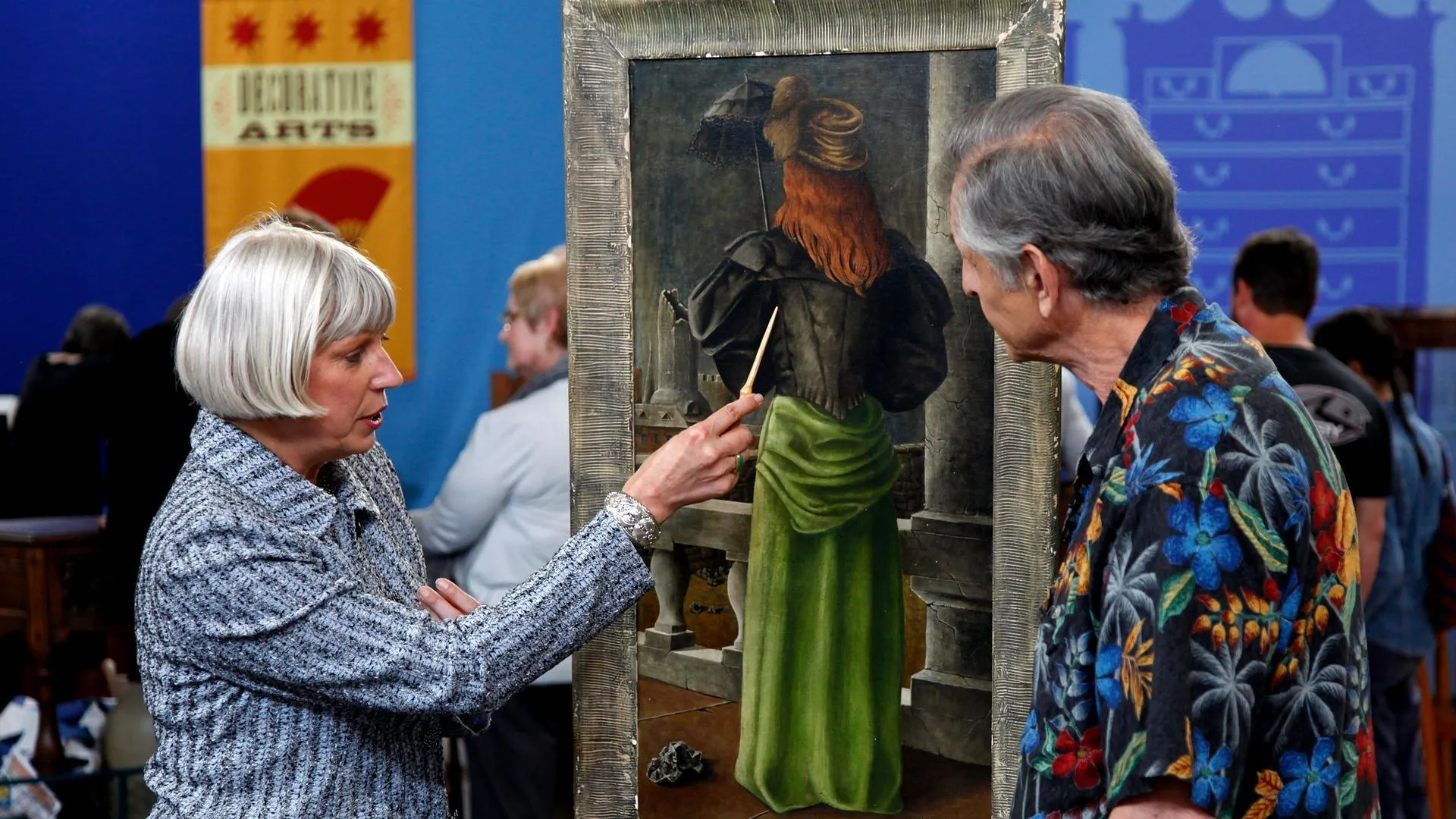GUEST: I brought a, what I was told, a blanket closet that was done in pyrography, I think that's the name of the craft. And I don't know who did it, and it's something that I got in 1987 at an antique annex.
APPRAISER: Well, you are correct. This is what's known as pyrographic art. Pyrographic art is when an artisan will heat up a metal tip or wire and actually burn a design into a cabinet. It's been a long-honored tradition. It kind of developed a resurgence during the Victorian period and early into the 20th century. And what you're looking at is a wardrobe, probably made out of western red cedar.
GUEST: Oh.
APPRAISER: And I think the wardrobe was made probably 1880s to 1900. And if you take a look at the hardware, and then if you open up the door, and you look at the through tenons...
GUEST: Okay.
APPRAISER: This is late 19th-century construction.
GUEST: Okay.
APPRAISER: But really, the design is 1910, 1915. You've got this wonderful Art Nouveau design of these trailing flowers, and it continues over onto the side, with a beautiful woman that seems to be inspired by the Czech artist Alphonse Mucha, a lovely lady with her arms outstretched and foliate surrounding her. But the real pièce de résistance is the front.
GUEST: I know.
APPRAISER: So interesting with these babies. There's ten panels.
GUEST: Mm-hmm.
APPRAISER: And seven of them have wings. If we go to traditional art history and you think about babies with wings, I think they probably did pass away, which is sad. If you look on the foreheads of a few of these children, you'll see faint names. And I suspect that that probably is the children's names and you wonder if the artisan that did this... if these were... his children. You know, it's just a story of his life.
GUEST: I know, and this one I love is holding a flower that extends down here, it's so sweet.
APPRAISER: If you look down at the bottom here, you see this area is unfinished.
GUEST: I know, I know.
APPRAISER: And these two children. While the outline was burned in, if you look at the hair and the eyebrows, it's been penciled in, but never burned. So he's laid the design out, and it's like he never got there, so do you wonder, "Did he pass away as well?"
GUEST: I know.
APPRAISER: Or what happened? When you bought it, how much did you pay for it, may I ask?
GUEST: I paid $300 for it.
APPRAISER: And have you ever had it appraised?
GUEST: No, I haven't.
APPRAISER: I'm going to take it out of the category of pyrographic art and call it folk art because it's so unique and so special. I think it's probably safe to say you're never going to see another one like this.
GUEST: I don't think so either.
APPRAISER: So in today's market, if we were to place an auction estimate on it, we would say $8,000 to $12,000.
GUEST: That's wonderful.
APPRAISER: Now, you bought it at an antique shop. Yeah. If I were to go to New York and see this in a retail setting, I think you could probably easily see a price tag of $15,000 to $20,000.
GUEST: That's great.











